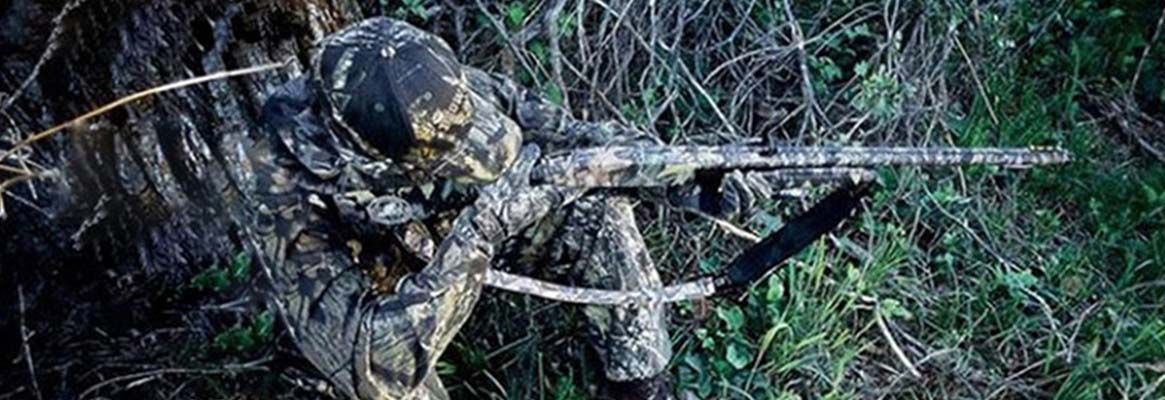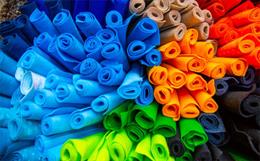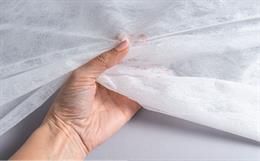I. Introduction
The United States Marine Corps and the U.S. Army have takenthe initiative to develop state-of-the-art fire retardant nonwoven compositefabric technology for use mainly in Combat Utility Uniforms (CUUs) andcoveralls. This effort is being conducted via Small Business InnovativeResearch (SBIR) contracts awarded to Nanosyntex, a Tennessee-based company.Essentially, SBIRs are very competitive and offer the perfect medium in whichto conduct what may be termed "high-risk technology." There aregenerally two phases that are funded by the Department of Defense: Phase Iallows for "proof-of-concept" to be conducted within 9 months. Ifsuccessful, Phase II allows for effort toward concentration of bringing thetechnology to a rapid fruition within 2.5 years. In rare situations, a PhaseIII effort is allowed toward manufacturing; however, joint partners arenecessary to help in receiving matching funding. It must be understood that commercializationof product is critical toward acceptance of each phase. For additional SBIRinformation, visit: www.acq.osd.mil/sadbu/sbir/.
II. Purpose
To review U.S. Marine Corps and U.S. Army SBIR Phase I and update Phase IIcontract for development of novelty nonwoven fabric for military applications.
III. Goals:
The primary goal of SBIR is to develop and incorporate enhanced nonwovenfabrics for military-type uniforms applications. Nanosyntex stressed thedevelopment of a composite, uniform nonwoven that possesses high strength,softness, improved abrasion resistance, printability and other relatedcharacteristics.
IV. Primary Contractor:
Nanosyntex
V. Description
The objective of SBIR projects is to utilize the latestnonwovens, FR fibers and treatment technologies to enhance performance andreduce lifecycle costs for combat-type clothing. The concept includesdevelopment of lightweight composite material that offers high durability, highbreaking and tearing strength, breathability, and cost reduction to replacecurrent woven uniform material. Included is the design of a FR fabric mainlyfor military FR apparel application.
Typical woven fabrics use old textile technologies that are outdated and generally outsourced to other countries. They use twisted yarn construction that has poor insulation, filtration and barrier properties, whereas nonwovens are only a few decades old and offer innovation and technological growth. Nonwovens are fabricated with finer individual fibers that are bonded and/or entangled to supply better insulation, filtration and barrier properties. The strengths of nonwoven fabrics are that they can be engineered with specific properties but with a higher production rate, wider width up to 120 inches and lower cost with potential for full automation.
Woven fabrics are basically two-dimensional structures with limited flexibility of design and composition, and go through at least 14 separate processes, usually conducted in three individual mill operations: a spinning mill, weaving mill and finishing mill. Nonwovens contain three-dimensional fabric structures and undergo only five processes or less, potentially done under one roof. Nonwovens are based on web-forming processes such as extruded spunbonded processing or carding processing. Nonwoven fabrics for this project then go through either thermal bonding and/or hydro-entangled processing.
VI. Phase I Results:
The nature of this nonwoven development is such that the external portion of the fabric can be made with totally different properties than the internal portion. Nanosyntex has developed a multilayer nonwoven composite fabric for military garment application that can provide water absorbency on the inside and water repellency on the outside. Just as easily, the outside can be designed to possess flame resistance, chemical protection or other unique properties, while the inside, towards the skin, remains soft, supple and highly wickable.
Phase I studies indicated that nonwoven composite fabrics can be made 25% lighter and stronger than current woven military uniform fabrics (see Table I). In addition, they can be made to exhibit over three times the air permeability or breathability of the current woven military uniform fabrics (see Table II).
However, the best achievement was that nonwoven fabrics were fabricated that possessed lighter weight and thinner properties while exhibiting higher normalized breaking, tearing and elongation characteristics, as well as improved air permeability properties compared to current woven twill uniform fabrics (see Table III).
Other features discovered from the unique nonwoven composites were a high degree of moisture transport; wrinkle resistance; compatibility with fusible applications, crease-set process or ability to possess permanent creases using silicone RTV beading; filtering characteristic which would provide optimum sand penetration; and capability to engineer heavyweight nonwovens for tentage or equipage applications.
The Phase I overall proof-of-concept effort was successful to the USMC and therefore Phase II was launched. Daily News Record summed up the progress of this project in an article based on a speech presented at the Outdoor Performance Materials Symposium sponsored by the AATCC and AFIA earlier this year.
VII. Phase II Update:
Phase II efforts of this project started on Nov. 12, 2005, with the specific emphasis to optimize the nonwoven composite fabric construction and processes based on Phase I findings, while incorporating FR fibers and chemical treatment technologies. This would involve improving abrasion, laundered pill resistance and printability, along with conducting field test uniform trials for consideration of better understanding comfort, physical and mechanical properties. Phase II uniform fabric would offer enhanced abrasion resistance, develop a FR fabric and offer a combination water repellent/moisture absorbent composite fabric.
The current woven fabric used by the U.S. military for uniforms is made of flammable synthetic and cellulosic fibers. The various FR treatment technologies applied onto these fabrics have yielded improvement in FR characteristics; however, these treated fabrics have been shown to lose their FR characteristics after a single laundering cycle. The FR composite fabrics developed to date by Nanosyntex do not suffer from this problem and have been shown to retain their FR characteristics even after 25 home and industrial laundering cycles.
Additionally, the fabrics have been shown to be at least 50% better than the woven counterpart in terms of improvement in abrasion resistance, while showing excellent pilling resistance.
Recent Pyroman studies conducted by USMC show that the FR fabric-based garments performed slightly better than the industry standard Nomex fabric-based garments for protection against second and third degree burns.
Currently, enough FR fabrics are being made on commercial equipment for potential field testing by the Marines and U.S. Army.
VIII. Future of Nonwovens:
Successful commercialization is the future of nonwovens. Getting people to accept nonwovens for clothing and general applications will be the key to success. Thus far, nonwovens are generally perceived as disposables with a harsh, stiff hand and weak in nature. The goal of this SBIR is to break out of this mode and prove the concept through use of military applications.
The military offers the best inroads toward these goals in that nonwovens will be considered for parachutes, tentage and equipage; (i.e., duffel bags, backpacks, tarps, etc.). Also, medical applications can be proven with the use of some nano-particle applications; i.e., silver to make antimicrobial that may aid in skin infections, carbon tubes to protect against chemical environment, or particles to dispense medicines to wounds.
IX. Web Site Update:
Nanosyntex is utilizing its Web site as a strategy to facilitate commercialization and means to accelerate the rate of technology transition. This will allow for maximum commercial licensing and strategic alliances in order to bring the technology to full fruition.
To keep updated with this SBIR project, USMC wear trial results, other military and commercialization aspects, and overall future of nonwovens, visit www.nanosyntex.com.
X. Reference:
1. Brenda Lloyd, Daily News Record, Vol. 35, No. 21, May 23, 2005, page 50.
About the Authors:
Stephen P. Szczesuil is the Textile Technologist with U.S. Army Natick RDE Center and Dr. Vasanth Narayanan is associated with Nanosyntex.







